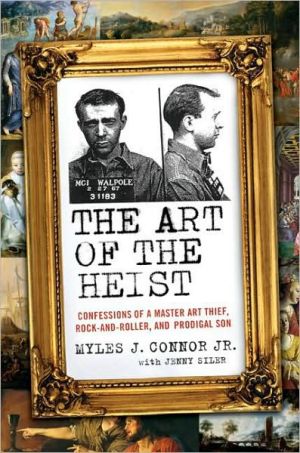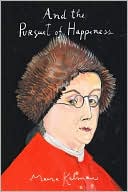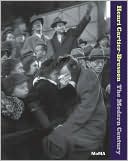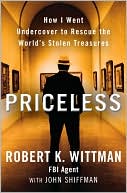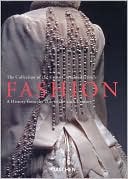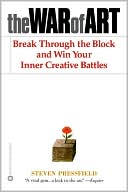Art of the Heist: Confessions of a Master Art Thief, Rock-and-Roller, and Prodigal Son
From New York's Metropolitan Museum of Art, to the Smithsonian Institution in D.C., to Boston's Museum of Fine Art, to dozens of regional museums throughout the United States, no museum was off-limits to legendary art thief Myles Connor. He has used every technique in the book, from breaking and entering, to cat burglary, to false identities and elaborate con jobs. He once even grabbed a Rembrandt off a wall in broad daylight and simply ran like hell. His IQ is at genius level, and his charm...
Search in google:
From New York's Metropolitan Museum of Art, to the Smithsonian Institution in D.C., to Boston's Museum of Fine Art, to dozens of regional museums throughout the United States, no museum was off-limits to legendary art thief Myles Connor. He has used every technique in the book, from breaking and entering, to cat burglary, to false identities and elaborate con jobs. He once even grabbed a Rembrandt off a wall in broad daylight and simply ran like hell. His IQ is at genius level, and his charm is legendary. The fact that he was in jail at the time of the famous robbery of the Isabella Stewart Gardener Museum—which remains the largest art theft in American history—has not stopped the FBI from considering him a top suspect in that still unsolved robbery. How did the son of a decorated policeman grow up to become one of Boston's most notorious criminals? How did he survive a decades-long feud with the Boston police and the FBI? How did he manage to escape one jail sentence with a simple fake gun carved out of soap? How did he trade the return of a famous Rembrandt in exchange for early release from another sentence? The Art of the Heist is a roller-coaster ride of a life, by a man who was drawn to misadventure at every turn. As a promising young rock star, Myles Connor started collecting Japanese swords and weapons. Soon his collection expanded through less than legitimate means, and his education in European masters and modern artists accelerated. Disguised as an art collector, he spent time in the archives of museums far and wide, and visited after hours to take advantage of what he learned by day. Along the way, he robbed banks, warehouses, trailers, and estate homes. He engaged in rooftop shootouts with the police. He walked the streets of Boston in disguise while dozens of policemen were out searching for him. The Art of the Heist is part confession, part thrill ride, and impossible to put down.The Washington Post - Nora Krug…a gripping tell-all…The arc of Connor's story—the son of a police officer, growing up with a love of the finer things that landed him on the other side of the law—is cinematic, and his book offers a fascinating look inside the mind of an unrepentant criminal
\ Nora Krug…a gripping tell-all…The arc of Connor's story—the son of a police officer, growing up with a love of the finer things that landed him on the other side of the law—is cinematic, and his book offers a fascinating look inside the mind of an unrepentant criminal\ —The Washington Post\ \ \ \ \ Publishers WeeklyFrom his daring 1965 jail break at age 22 to his legendary career pilfering treasures from museums all over New England, Connor's life is the stuff of adventure novels. Now, with the aid of novelist Siler, the notorious art thief recounts his scores and sets the record straight on one of the biggest art heists ever-at Boston's Isabella Stewart Gardner Museum. The son of a cop, Connor grew up outside Boston. He developed a genuine appreciation for art-especially samurai swords-and after his first robbery, at the Forbes Museum in Milton, Mass., he never looked back. He stole a Rembrandt from Boston's Museum of Fine Arts in broad daylight and used it as a bargaining tool for a decreased prison sentence. Connor compares himself to Robin Hood: an art-world rogue who took pains to avoid violence and truly admired the pieces he stole. When asked whether he masterminded the Gardner heist, despite being behind bars at the time, he replied: "You would have known it was me. I would have taken the Titian." (May)\ Copyright © Reed Business Information, a division of Reed Elsevier Inc. All rights reserved.\ \ \ Kirkus ReviewsIntimate memoir of the criminal underground from an atypically blue-collar art thief. Connor was the scion of Mayflower descendants fallen on hard times on one side, the son of an Irish cop on the other, a black sheep to both sets of relatives. Born in 1943, he grew up in Milton, Mass., near Boston. He chafed against New England's strict class divisions, developing in adolescence a rebelliousness that seemed somewhat incongruous with his love of fine art and antiques. Yet Connor suggests that class snobbery propelled him toward his vocation: "The first time I wandered into the Forbes Museum, their contempt was palpable . . . they could tell just by looking that I wasn't one of them." He got even by pulling off his first art-museum robbery at the Forbes in 1965, around the same time he was finding some success playing rock 'n' roll guitar in nightclubs. (The lifestyle of the gangsters he encountered on the club circuit was another factor drawing him to a career in crime.) Connor fancied himself a prodigy, but his brazen crimes brought punishment soon enough; at 22 he was arrested for burglarizing a Maine mansion, but only after shooting at the pursuing officer. He escaped from jail using a soap-bar gun, cementing his reputation in the New England underworld. Tracked down in Boston, he engaged in another extended gun battle and chase. The enraged officers retaliated by beating him severely when they finally cornered him, and by framing him for a series of unsolved rapes, which offended him deeply: "I have always lived by a strong code of ethics when it comes to civilians." The rape conviction was eventually overturned, and he was free to pursue further criminal schemes. In 1975, he stole aRembrandt from Boston's Museum of Fine Arts and used it as a bargaining chip to avoid standing trial for another theft. Connor seems very taken with his own daring and panache, and the narrative, co-written by novelist Siler, focuses on his criminal glamour rather than the nitty-gritty mechanics of his devious deeds. Self-regarding but revealing. Author tour to Boston and New York\ \
